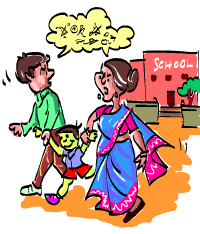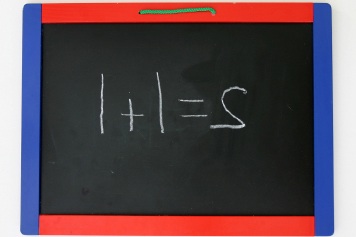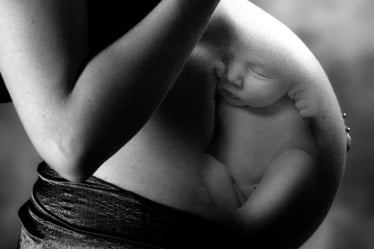
Picking Out a Preschool [Illustration by Shiju George]
It was a hard month for my sister – phone calls, running out the door at short notice, mulling over the possibilities, waking up in the middle of the night wondering, “Are we doing the right thing?” No, she wasn’t shopping for a house. She was looking for a preschool for her two-year-old son.
Choosing a preschool for your child is not for the faint-hearted. By the time a child is two or three, he’s ready for more social interaction with other children than most home situations can provide. This means that it’s time to explore the preschool option. Yet, even for parents whose children have been in daycare from the beginning, choosing a preschool can make them shake in their boots.
My sister’s search for a happy, nurturing environment for her son ended relatively swiftly. There was an elderly lady, a retired school principal who had opened a small kindergarten in her house, for children ranging from two to almost five. That proved to be a bonus.
My other friends with young children had a harder time. They made the rounds of many preschools – for months it seemed — before selecting the right one.
Looking around at the options in your area is vital. It is necessary to shop around for preschools in the same way that you shop for a baby’s clothes or a daycare centre, suggests a veteran parent. When you are getting close to a decision, take your child to the preschool to get a feedback. Involve the child in as much of the decision as you can realistically.
There are several issues to explore. As you visit preschools in your area, ask yourself some straight questions: what is the environment like? Do the children look happy? Will the preschool provide the names of other parents for you to speak with? What kind of food do they feed the children? What kind of activities do they have?
Work or play?
Does the preschool have an academic curriculum? Ideally, a preschool should provide a nurturing environment that focuses on play and has very little academic work. The child can learn all that when he gets into kindergarten or first grade.
Children can be trained to recognise the alphabet and learn to read, but unless they understand certain concepts discovered through play, they won’t have the context to understand what they’ve learned. A strong, play-based programme where children can explore concepts through elements in their environment will set them up for lifelong learning.
What to watch out for
Preschools come in all shapes, sizes and styles. No matter what the configuration, there are two big areas of concern to watch out for: preschools that require a child to be toilet-trained and preschools that require all children to nap.
The average two-year-old is ready to be toilet-trained, but doesn’t have the fine motor control to avoid accidents. This is where a good preschool plays a crucial rule. Not only do they encourage in a child the concept of control but also teach them to tell the caregiver at the preschool that they wish to visit the toilet.
Napping
Many children nap, and they need to. But some kids do not, and for these children, enforced napping can be torture. Therefore, it would be a good idea to look for a preschool that allows some flexibility, offering the option of quiet play in another room.
Adjusting
For some children who have been in an organised daycare setting (a neighbour or a creche) from the time they were infants, the move to preschool may happen easily. For other children, who have been home with a parent, with a nanny or in a small, shared babysitting arrangement, the adjustment may be more difficult. Remember that change in routine – of any kind – can be rough on certain children while others may not be affected by the change to such an extent.
Try creating the new morning routine a couple of weeks in advance of the D-day. If your child is enrolled full time, let the child attend the preschool for only a few hours initially. And remember that preschool doesn’t have to be a full-time thing. How about starting two days a week, or two and a half hours a day?
And then there’s you
I remember my sister felt an odd and overwhelming sensation while she walked out of my nephew’s preschool, leaving him behind. It is natural for you to miss your child while he is away at school and wonder how he must be faring on his own, even if it’s for a few hours. Going to preschool is a major milestone for both you and your child. It’s a new stage, one that is likely to bring its own little anxieties and rewards.










